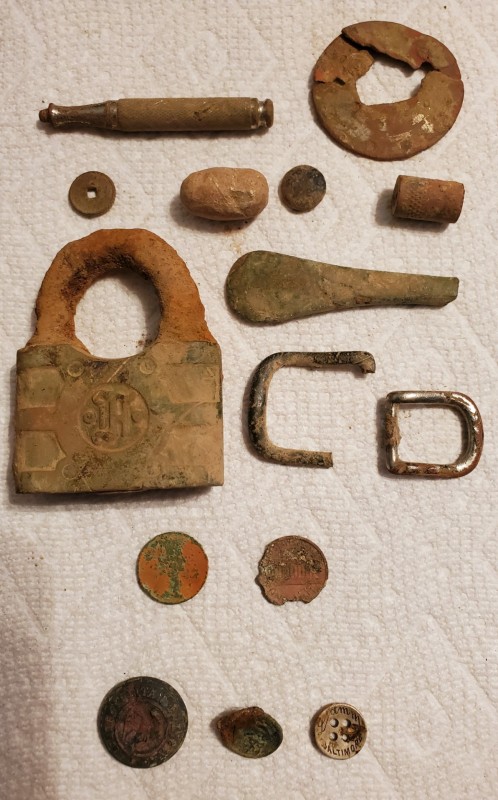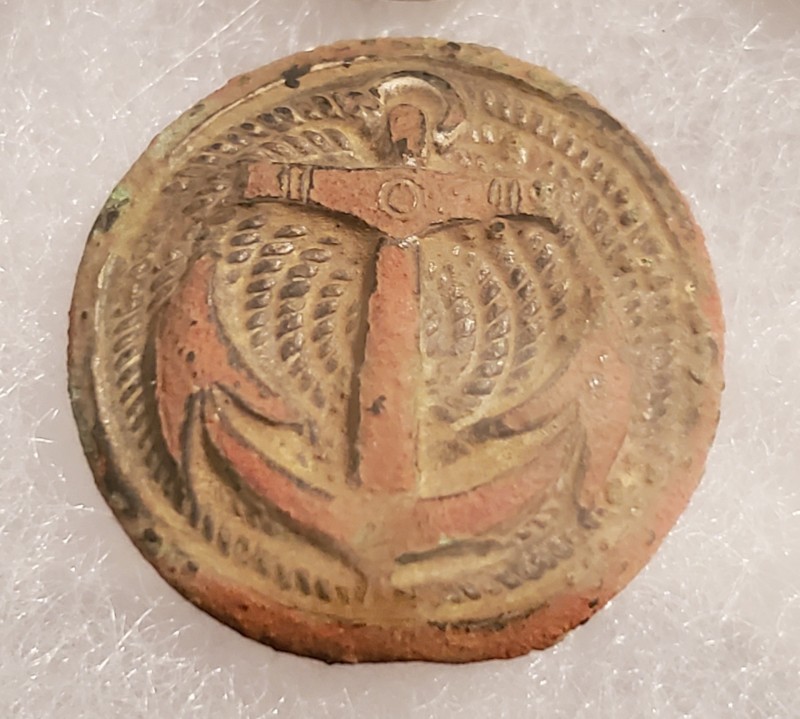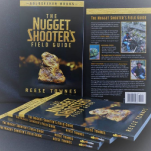Leaderboard
Popular Content
Showing content with the highest reputation on 03/08/2021 in all areas
-
We took two trips back to the gold rush camp area. I have identified 6 structures at the site so far. My neck is burned and my family is tired but everybody seems to enjoy themselves. No coins on the last two trips but some cool stuff has been pulled out. Powder flasks give a hell of a tone on the Equinox! Speaking of the Nox, it can find small stuff as in tiny buttons and pieces of lead. So here are the pics. My wife dug the Bowie knife and it may be my favorite find. The trident looking thing is a mystery and it was dug by my sons friend with a Whites XLT I gifted him. Cool find. Dug a square buckle with a star if anybody has info on it I would appreciate it. A blurry pic of a child’s ring with a diamond imprint.11 points
-
Finished up the farmhouse site today, made a few more passes and found nothing. I went to a new site that I previously plotted using old maps where a building was up to the 60s, and first known in 1917 on a USGS map. Hacked around a bit and found the objects in the photo. I'm not sure if I should grid this spot, I didn't hear a lot of iron. Great way to kill an afternoon. At least this field was out of the annoying March wind. The disc is lead, could be a bale seal, or possibly a weight or game piece. 1 1/4 inches in diameter. It was weird to find a sinker in a farm field about a mile from the river, but there it was. Some kind of point, it is brass or bronze. It is fashioned to be aerodynamic at any rate, but could be a finial. Large heavy buckle, most likely work animal tack. I think the wheat penny is a 1909, but not an S or VDB, it is so corroded it doesn't matter. 😀 Best find of the day, the brass plate. It's 2 1/2" by 2, has a naked woman on each side, and a man and an animal in the center embraced by the arms of the face on top. Better detail in the bottom photo. Image search returned nothing, but I may have this very object in one of my artifact books. Don't know whether it was a buckle, mounted on furniture (it has a flange on the back but no holes or guides), or some sort of breastplate. Not much time left before spring planting.5 points
-
I have a pack canoe, 35 lbs, my sea hunter weighs 14% of that hahah. Nice little boat and plan to use it to access areas between priv properties along the puddles here. Just need the motivation...3 points
-
I have taken your message into consideration, I will answer it a little later with a new subject3 points
-
All my childhood neighbors would find lead weights in their yards if they detected..... casting practice.. haha.3 points
-
3 points
-
If you look at the picture of the pieces, the ring on the original clamp is what you need to remove for it all to come off easily. This is Carolina's picture since he got his off with little damage and I mangled mine a bit. Looking at the clamp from the top, there is a very little seem between the top ring and the cone shaped piece. From the side, there are retaining pieces that fit into slots along the upper part of the cone. I tried unsuccessfully to push the retaining parts in to release the cone. I ended up using a very small flat blade screw driver to get between the top ring and the cone and pry it out. Once the ring released from the cone, it pretty much all slid apart.3 points
-
The overload symbol is not about the normal receive sensitivity, which is what the sensitivity control sets. It is about the built in transmit power being reduced to deal with adverse conditions. The Equinox senses when there is too much signal blowback from saltwater or black sand or both. When a detectors "sees" too much salt or too much black sand (or both) it will go totally blind unless the transmit signal is reduced. Going into overload is not reducing depth - it is giving you depth when the machine would otherwise be non-functional. The overload will not go away until the conditions creating it go away. The only time I have seen the overload signal is when crossing areas on a beach obviously loaded with magnetite. The overload symbol comes on and the detector keeps running fine, then the symbol goes away once past the magnetite patch. I do not know what intensity of mineralization it takes to trigger the process, but it is quite a lot. Difficult Areas – Black SandSome beaches contain black sand, which has high natural iron content and is often magnetic. This causes continuous false ferrous detections, making normal beach detecting impossible. Beach Mode automatically senses black sand and reduces the transmit power to ensure that targets can still be detected without overloading occurring. When black sand is sensed, the Beach Overload Indicator will appear on the LCD. When this icon disappears, full transmit power automatically resumes.3 points
-
Stumbled onto this interesting article form another site...... Not sure where to post this but Steve can relocate it where he see's fit? https://www.westcoastplacer.com/paleochannel-hunting-guide/2 points
-
Never hunted the Tar in mud before so I was a little off balance at the start. Oh, the machine was ok but I was switching from handling pull tabs & rusty bottle caps to can slaw and such. I was getting sucked in early on digging more trash than I should've. About a half hour of that I got back into the game , found out where the nickels are, by moving slower threw the junk. I hunted in all metal ,disc -2. Wasn't long ,was getting fairly decent at calling the targets before digging. I dug maybe 5 or 6 coins around seven inches. So a junk ring, couple of MatchBook cars, 59 coins , nine nickels for around $6.29 . I'm not the slickest guy swinging a coil, and this site had the goods and there's plenty left. Today ended up a dunk shot and sure was fun.2 points
-
Sand is just that - sand. So a rock and the minerals in it are not part of a discussion regarding "black sands." Rather, you have a rock that appears to have some dark colored mineral, presumably an ore of iron. Sand that is black is not always "black sand," and just because you have "black sands" does not mean you will find gold. Iron ores are common and just like quartz, can be found in far more locations that lack gold, than those that have it. Anyway, here is something I wrote for another thread that explains what "black sands" are... People sometimes misread the term “black sand”. Black sand is a mining term and actually has more to do with weight than color. Black sands are the heavy mineral concentrate recovered when running any form of placer mining concentration system. The most basic version is the heavy mineral concentrate left in the bottom of a gold pan. From the Glossary of Placer Terms in Placer Examination Principles And Practice: BLACK SAND Heavy grains of various minerals which have a dark color, and are usually found accompanying gold in alluvial deposits. (Fay) The heavy minerals may consist largely of magnetite, ilmenite and hematite associated with other minerals such as garnet, rutile, zircon, chromite, amphiboles, and pyroxenes. In Western gold placers, the black sand content is commonly between 5 and 20 pounds per cubic yard of bank-run gravel. Black sands are also concentrated by winnowing action on beaches derived from terrestrial sources like volcanoes or granitic intrusives... any source that can supply the requisite heavy minerals. In this context simply looking at a beach or in a stream and seeing dark or black colored material is not finding black sand. Amateur gold prospectors often do this, thinking that seeing black colored material in a stream is a positive sign for gold. All they are often seeing is just material like black slate or shale gravels and sands, not actual black sand. Unless it is heavy material concentrated by gravity action and typically with a high magnetic component, it’s not black sand in the context of the discussion. True black sands are usually very fine though I have encountered coarse grain black sands. The fine grain variety often has a glittering appearance due to the presence of many sharp edged crystals of the constituent materials, chiefly magnetite. Sands concentrated by gravity action and containing a high enough portion of heavy garnet material which confers a reddish color are referred to as “ruby sands.” Again, the key thing is material derived by gravity concentration and therefore very heavy, not simply color. Here is a picture of some gold I recovered in a Garrett 10" gold pan along with the resulting heavy magnetic black sand concentrates. Click picture for larger view. Placer gold and black sand concentrates2 points
-
I had a 30' motor yacht, caught huge Striped Bass, Spanish Mackerel, Atlantic Bass, Spot, Flounder and the occasional ray. Used to Kayak fish on the other river. Got a tributary right out back. My first boat was a 25 foot ProLine my wife and I restored from the ground up. Love clam chowder, but only know the East Coast kind. The Potomac is kinda unforgiving, and the Chesapeake Bay is downright nasty. Boats are expensive and tedious to maintain. I might get a small boat in the future for river hunting. I see what you mean about cutting into metal detecting! 😀2 points
-
Had to give up fishing except for special occasions... it was cutting into my detecting time. haha. But when I lived in the Pacific NW, I wouldn't miss razor clam season on the Oregon Coast... Limit out... then go detecting. Big pot of razor clam chowder for dinner 🙂2 points
-
The overload indicator - / work on the reduced Tx .... / on Equinox turns on until the magnetite concentration reaches a certain level - from my observations it is somewhere from the limit of 20-30% of the Magnetite concentration in Black Sand - when using multifrequency..and 11" standart Coil... The mere reduction of the detector's sensitivity does not affect .. the change of the detector's resistance to such a phenomenon .. A small 6 "coil will be less resistant to higher levels of Magnetite Concentration in Black Sand than an 11" standard coil. ---------------------------------------------------------------------------------- BlackSand Test boxes with 4.4% .., 12%, .. and 33% Magnetite concentration ..2 points
-
The information made available by the contributors to this thread is invaluable. The same can be said for the Ancient River Channels thread above. Thanks to everyone involved.2 points
-
Nowhere in the Anfibio or Impact owners manual does it recommend a factory reset when changing coils. The Garrett manuals all do as far as I know. That is one of the few things I find inconvenient on the AT Max. I'm glad it is not required on the Anfibio with factory coils as all my Mode are customized to some extent. Good to know Non Factory aftermarket coils may need a reset.2 points
-
Have you used their repair facility? Always had good work done by them. Just a thought. GaryC/Oregon Coast2 points
-
2 points
-
I have a question regarding how the Equinox throttles back sensitivity when it encounters black sand. If I am running at 17 sensitivity on a salt water beach and detect over black sand; the machine throttles back sensitivity. By how much does it do this? What would be the sensitivity when the black sand indicator is active at 17? This leads me to wonder. If running at 25 sensitivity and the machine encounters black sand, is it going to be a higher number than the previous scenario? I also realize, that at 25 the machine will probably throttle back sensitivity much sooner than at 17... Just curious, thanks!1 point
-
Got out this weekend for about 4 hours with the Equinox 800 and 11" coil. The outing started out a little slow and after 3 hours I was getting a little discouraged. I had dug a few small musket balls, a dropped Sharps bullet and a crushed cuff button. So decided to head over to where my 2 buddies were digging. As I changed directions and worked toward them, I got a jumpy 15-16 on the Equinox and was rewarded with not 1 but 2 J hooks in the same hole. The area I worked between where I was and where my buddies were hunting was loaded with iron and progress was slow in getting there. When I got about 50 yards from my one friend I got a 19-20 signal and dug a zinc penny about 2 inches down. I thought great what's that doing here. Not 5 feet from the zinc penny I got an identical 19-20 signal only deeper. My first thought was another zinc penny. But at about 6 inches down in the bottom of the plug was a nice 1857-O half dime. That made my day! I walked over to show my closest friend and asked how long he was planning to stay as it was his permission. He told me he actually needed to get started back toward the truck now. We were about half way back to the trucks when I got a 18-20 signal one way but negative numbers the other. This kind of signal usually turns out to be iron but I decided that this might be my last decent signal and dug it anyway. I was down about pin pointer depth and the item was still in the hole, I loosened the dirt and took one last handful out of the bottom and through it on my pile next to the hole. In the pile I could see the edge of a large coin, so I called to my friend and said I think I have another coin. He came over and his first words were wow it's old. I said looks like a quarter and he said no it looks like a 2 real. I picked the coin up and to my surprise it was an 1781 2 real. Two great old coins in one hunt, still can't believe my luck. There's still stuff to be found out there.1 point
-
I'm yearning to know that answer as well (depth), but I did not have a staff member there with me using his own EQ-800 and a 6" coil. I was mainly hunting a very trashy site (old burn dump) and had my SENS turned down to 15 because depth was not my concern. I wanted good target separation, which I did get. I didn't get any falsing such as when a coil has a broken winding, but I was not prospecting and banging the coil like I d when Prospecting. We still have snow in the hills around us, so the gold testing will have to wait. Sorry I was not able to answer your questions and that will take time this summer when I am in the gold fields with staff and we are deliberately comparing and testing.1 point
-
Is it cheaper to get a shellfish license and just sneak the detector along? 🙂1 point
-
Yes, it makes no sense to wait for news that does not arrive, the presentation, the launch to the market, delays, several more years may pass. We must continue to stimulate the economy, there is no other option.1 point
-
Not completely true, if it is rolled gold or hand laid you can peel the gold off..which may not be much weight but there is enough gold to be saved that it can be sold as scrap. Which I have done before when sell junk gold...(Teeth, Earrings, grills, gold emblems, and gold peelings) Takes about 5 minutes. Now the base metal maybe worthless which I would call junk. On Gold filled and Gold plated items..(1/XX) ....don't even waste your time, they flake and do not peel off in one piece.1 point
-
Fisher lists discontinued detectors on their website, and most dealers show the F5 as out of stock; others show it as discontinued.1 point
-
1 point
-
NICE!!! That is quite a hit list there!! I can't even imagine fishing on the Potomac. I am/was a bank fisherman... two feet firmly on the ground. Salmon and Steelhead were my focus... trout, bass, crappie... on occasion, whatever would bite. My grandpa owned a 25 footer... complained about keeping it up the whole time. haha.1 point
-
Difficult to tell if I would have "heard" these coins while hunting in multi... I just know that I have hunted this area more times than I can count with various machine/coil combinations with various settings... but yesterday... using gold mode 1, stock coil and setting up the disc at 10 and below... I got three very clear 12-13 ID's that ended up being Jeffersons. A 24-25 that ended up a 1939 wheat at 8 or 9". And thin but and somewhat repeatable 28-29 that ended up being the silver Washington I posted in my "Quest" thread: The quarter was on edge about 9 1/2" down, and I did cross check in Field 2 - 50 Tone... the tone was there, but I had to really work for it. It was only there in one direction too. Iffy to say the least, even knowing where I pinpointed it with Gold Mode, and using ultra short sweeps. Hind-sight... of course I would have stopped... But there was enough scratchiness to the tone, I might have dismissed it without the Gold Mode verification. I think I will be using it more... I didn't even mind the 1 tone... I had committed to digging everything I could get a repeatable tone on... so why not? Then again... that is what my Vaquero does too :). Of course, I have a pocket full of pull tabs and ring pulls... but that was expected. One hunt result: Powerful mode I will be using more. ~Tim.1 point
-
After confirming with another expert , Famous Craig , we have come to the conclusion that this is what we like to call a "Junker". I trashed one similar about 8 months ago. Bottomline is your acid is eating that thing away. Real , solid gold will not do that...Your Welcome !1 point
-
I'd have named this "Just the Artifacts #5", but again I found some coins (thanks GB 😁) Today was a decent day for March but the wind was unpredictable. At least it got warm enough that I didn't have to wear heavy or electric clothes. I think I found my first "Zincoln", it's the heavily corroded memorial to the right of the unidentifiable penny. Got another handle, again probably a razor. The large disc is gold plated, one side smooth and one has concentric circles. I'm thinking it was on a pocketbook or something. Small knurled ring that at first i thought was an Asian coin, but it is some sort of adjustment wheel. Much too small to be a coin. Odd lead "egg", a snap, another knurled knob. Big brass padlock I can't find the manufacturer of. The artful logo brings no result on image search. Heavy spoon handle, two buckles, one appears to be plated. Penny, probably a wheatie, and the corroded penny. This field isn't too good for copper or Zinc! Best for last again, a two piece button with the back missing says "Metropolitan Police DC". The small version of the Marine Corps buttons I've been finding, and the second four hole button I have ever found, "Lamm Baltimore". It's about ~1910, from a Baltimore company that made men's trousers and raincoats. Hope this crazy stuff is still interesting! Anyone identifying the anchor over rope button in my previous post is welcome to visit. 😀1 point
-
1 point
-
Unbelievably its gets better every time! The 1850s panel plate buckle is simply off the chart, rarest item so far. I only know of 1 other found in the foothills. Some will try and tell you it is militia related, it is not, they were available for purchase and worn by everyone from merchants to miners during gold rush. The is another panel plate with an eagle that is much more common, see the Bell book. The Bowie is also beyond spectacular.1 point
-
Thanks Gary and Flak. I thought about them, but the phones would probably cost more to repair than a new pair and I'm a bit of a tinkerer, so was just searching. Was going to use this pair as backup.1 point
-
Outstanding finds! It's always a vicarious kick to see what you turn up in your site. I bet it's a blast to do this with family, wish some of mine would get the "bug". Wow.1 point
-
1 point
-
Hunting the first sandbar on Lake Ontario where the water is clearer and it is easy digging I would use the gold modes to hunt.I would go mostly by how the zip sounded but would glance at the numbers. I found a small 316 stainless steel ring with small stone that rang as a 1 that was near a foot.If i did not have gold mode i would have not dug it because it would have sounded terrible.I dug a tough gold earring hit with this method too.The gold modes have a place in certain situations other then nuggets.1 point
-
Forgot to mention I tried different single frequencies also. Spent about 4 hours trying different things at one of my worst colonial sites that produces new items every time the ground is turned over for planting. It is only about every 5 years now since everyone in the US practices "no till" planting. It seemed like 15khz was the most quiet and 5khz the most noisy. 20-40khz were very similar to 15khz. Almost every plug will have 3-5 square nails. The ground is full of fertilizer. The first 5-6 inches is organic top soil and underneath that is solid red clay but with really low iron oxide content.1 point
-
Can you even find a new TDI of any variety? (There's a used Pro on Ebay.... That model seems to be the one the purists prefer. I think RNB makes lithium batteries for it.) In the USA (with service centers) your choice for a new land based (meaning with ground balance circuitry) PI seems to be down to the heavyweight Garrett ATX and the Minelabs (soon-to-be-released GPX6000, SDC2300, and price-reduced GPX5000). IMO, if you want/need a PI now, might as well get one. Used is always an option in my book. Life is too short to sit around and hope....1 point
-
Wanted to update this. I tossed my little baggie of mangetite down and ran my Gold Racer accross. Mineral meter was pegged and even after I ground balanced over it the mineral meter still displayed which is correct. Next I tested the Multi Kruzer with the Superfly and did same thing and the mineral meter would turn off for some reason even in Gen mode. The meter would occasionally show something then turn off. I tossed the stock coil on did same routine and the mineral meter worked perfect in all modes. I next put the Superfly back on and did a factory reset and meter came back on just as the stock and Gold Racer did. Big thanks JCR for pointing this out, I never noticed the settings got corrupt and assumed I was hitting clean ground in patches!!! This explains my unstable threshold in Gen Mode.1 point
-
1 point
-
With Gold mode, it's best to not look at the screen at all and just hunt by tone because the numbers can be way off, especially around iron.1 point
-
That's a pretty good writeup with some nice diagrams. Usually people only talk about paleo placers in reference to California. One of my personal major pushes in the placer gold realm today is to locate these old channels in other states where they've been overlooked or ignored/unrecognized. I've found them in every state I prospect in. It's not just limited to gold though, I've found placer jade in Wyoming by concentrating on looking for older gravels from long extinct rivers. Sometimes the gravels themselves are mostly eroded away and difficult to locate, but there are still residual deposits of garnets or other heavies. In Colorado I found a bunch of heavy zircon sand which I used to trace an old channel. A pan can show the presence of minerals which could have only gotten to where they are at by stream transport at one time. In the case of the zircons, I was able to trace the formation which they originated from and thus was also able to find more parts of the long extinct and mostly invisible channel many thousands of feet elevation above and many miles distant. Things like this can be employed absent large visible paleo gravel deposits.1 point
-
On Land Matters I create the claims mapping with a proprietary system I've built into my spatial database. Even though that sounds "automatic" it still takes about 12 hours to process the 30 plus Gigabytes of claim data provided by the BLM twice a month. For individual claims mapping in my business jasong pretty much outlined the system. It's very involved work with huge amounts of research required to compensate for the often poorly located claims. Here's an example from my claims mapping this week. I'm researching a group of claims from the 1900 period in a well developed mining district. This group of claims has no metes and bounds description and the tie to a known permanent monument refers to "the white bridge on the paved road". This mining district is now composed of large mine pits that have completely obliterated any past roads or bridges from that period. The only other location reference is to another group of claims that were never recorded at the County and were abandoned in 1914. I have now managed to map the claims after researching the highway department records (no results), mining district records (missing), old maps (no results) and a long conversation with a regional historical society member (success!).1 point
-
Kentucky Camp is an interesting recreation of a bygone time. I really like the Greaterville area. Good gold and a great climate. It was really quiet and peaceful living there.1 point
-
The first thing to understand is that neither the MLRS nor any of the online claims mapping sites show actual areas under claim. On the Land Matters website we make that clear right on the front of the mining claims maps page. The mining claims represented on these maps are only displayed to the nearest section and DO NOT display the actual claim location. Sections are about one square mile and actual mining claim locations can vary considerably from their mapped location. The only way to determine an actual claim location is to obtain the County Recorder Location Notice and amendments for the claim in question, study the mapped location and then find the location marker on the ground. Members of the public and other prospectors do not have the right to determine whether an existing claim location is valid, only a court of record can make that determination. The next thing to understand is the BLM, Land Matters, Diggings and even the pay services do not rely on mining claim locations to present their information. The information is derived from BLM case files which are not based on current claims information. Besides the normal 90 day + lag in location files and records the BLM itself is years behind on updating these case files in several states. Just last week we ran some rough numbers on what percentage of BLM mining claim case files have never been adjudicated by the BLM beyond acknowledging the receipt of a notice. Adjudication is the simple process the BLM uses to determine if your mining claim location is properly described and located on public lands open to mineral entry. Until a mining claim case is adjudicated the BLM doesn't even know whether there is an actual mining claim associated with the notice they received. Here are state by state those percentages of not yet processed mining claims in a simplified format. 4% - Arizona 53% - California 20% - Colorado 10% - Idaho 1% - Montana and South Dakota* 1% - New Mexico 6% - Nevada 3% - Oregon and Washington* 14% - Utah 9% - Wyoming * These States are administered as a single unit by the BLM. As you can see if you are looking at the MLRS in California the information you are viewing is more than likely years out of date and has a slim chance of being accurate. In fact California is at least 2 years behind on processing claims closures so the numbers you see here just the tip of the administrative backlog iceberg. To varying degrees a similar situation exists in all states. The BLM isn't shy about warning you of this situation. On every file you acquire from the BLM you will find this notice in all capital letters and bold type: NO WARRANTY IS MADE BY BLM FOR USE OF THE DATA FOR PURPOSES NOT INTENDED BY BLM The list above should give you an idea of what purposes the BLM intended. Most County Recorders will update their records within two weeks of receiving location notices or amendments. There are notable exceptions to that standard. In particular in California some of the larger counties are far behind due to being closed to the public for the last year or so. Nonetheless the County Recorder's office is an essential stop on the path to determine public lands open to prospecting. What you are up against here is learning a new set of research skills before you can determine where there is open ground for prospecting. This may seem complex, and it is. Despite what appears to be a modern mess of red tape the fact is that successful professional prospectors in the United States have had to master these skills for more than 150 years. It's actually a lot easier now than it was even 20 years ago. It's just one of the many complex skills prospectors must master to be successful. I do this for a living. I can tell you from experience that there are some basic steps that really need to be accomplished even before you look at the BLM files or the County Public Records. The very first thing you need to do before researching claims in any given area is to study the Master Title Plat (MTP) maintained by the BLM. The Master Title Plat is the definitive map of government interests, ownership and past actions on the public lands. It includes patents, mineral withdrawals and ROWS. It's one of the few government documents you will find that doesn't have the giant BLM disclaimer. You can rely on the MTP to be an official government record. Without viewing and understanding the MTP you will waste a good part of your research and prospecting time investigating lands that you have no right to prospect or claim. Thousands of mining claimants waste their time and money every year staking claims that are invalid and will be classified as CLOSED as soon as your state BLM gets around to adjudicating your location notice. The real message here is that you have a legal duty to determine the status of the land before you put boots on the ground to prospect or locate a mining claim. This is known as due diligence and it's a positive legal duty to avoid trespassing. Not just charges of trespassing against a mining claim but trespass on private property or mineral trespass against the United States is a distinct possibility too if you don't do the research before entering these lands.1 point
-
That hexagram or six-pointed star has been used by so many organizations/religions that it could be tough to tie it down. However, since you are in Mormon Territory (right?) and they used it, that's my first guess. Don't let Gary Drayton see it or he'll be digging there for Templar treasures. I assume since you didn't show the back that it's not a button with metal loop. Think it might have been afixed with an adhesive and subsequently gotten knocked loose?1 point
-
Yes the frequency is the only setting that I change on the field. I have a 9 HF white coil. - 14 khz for low iron trashed areas - 30khz for high iron trashed areas. - 50khz on ultra high iron trashed areas but I rarely use it because of a too important loss of depth 5 tones or fulltones HH...1 point
-
What coil are you running? Picking the right frequency is probably the most important thing. If you understand what the settings do and how they affect performance, you really don’t need a custom program. Start with Deus fast, adjust recovery speed to 2 or 2.5, unless super trashy and thick iron then crank to 3, use the default disc or increase it as high as 10 (disc at this level DOES NOT affect depth despite internet rumors to the contrary and helps with preventing TID downaveraging and gives more accurate ferrous/non-ferrous indication on the horseshoe display), and your favorite tone setup (I like pitch tones with some iron volume for relic hunting, full tones for coin shooting in can slaw and pull tabs). Use 25-28 kHz as a good button, brass, lead, and gold mid-conductor relic frequency. Lower it if you need more depth on higher conductors like silver. HTH.1 point
-
I hear you on the junk. I remember telling a lady that stopped me and ask about my success on the beach, that this is what beach detecting is usually. I told her it was mostly a junk day today and she was shocked at the amount of pointed iron, bottle caps, fish hooks, etc... that I had found. My last words to her were that I was an unofficial, unpaid sanitation worker 😄1 point
-
Looking back over some of my finds in years past and my favorite detectors, I keep coming back to the tried and true MXT. Well balanced, user friendly, great selection of coils, is good in England on lower conductor targets and also a champ at finding solid gold nuggets. So many of my friends have had great success with the MXT as there is not much to setting it up. It is almost a Turn on & Go detector literally and the older folks like it that way. I have years of fond memories of the MXT and even the newer versions of it. What are some of your favorite White's detectors and if you have photos of finds, please share with us. A few pics of MXT success I have enjoyed.1 point

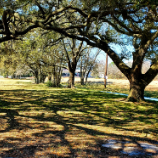
.thumb.jpg.8761b3d9b3da119b9e6d1912f67275ad.jpg)
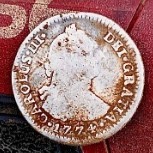
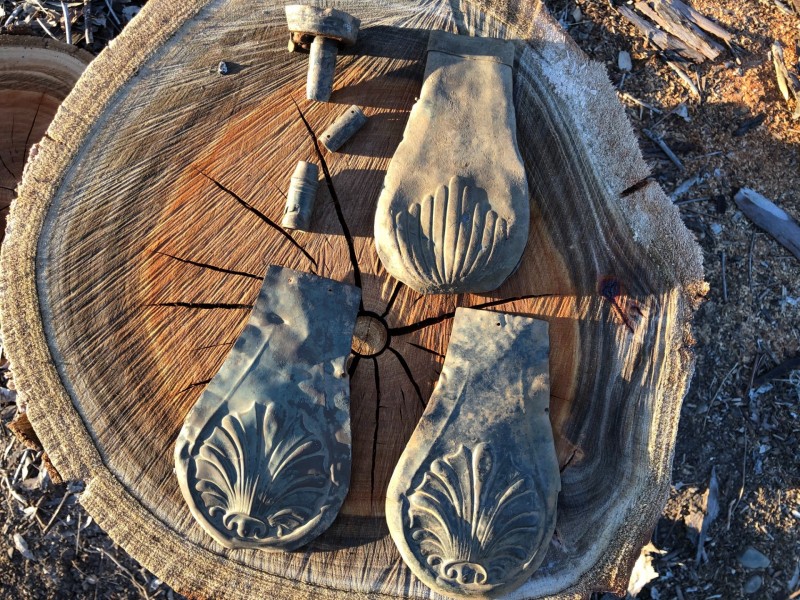
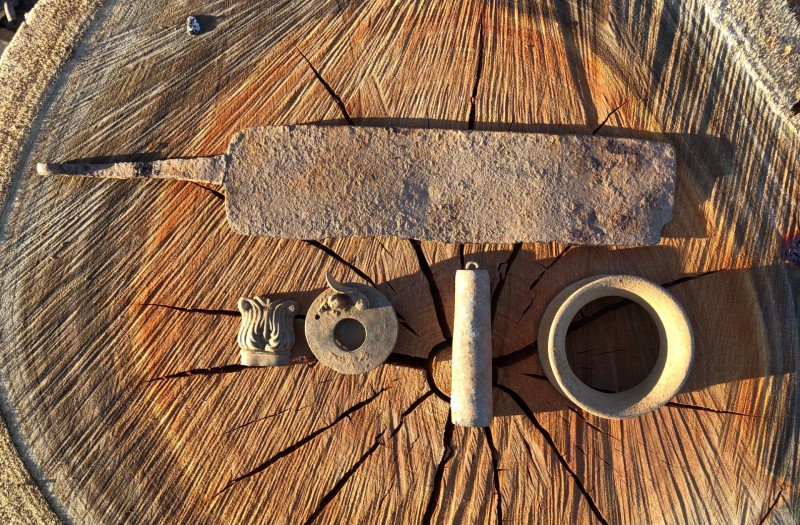
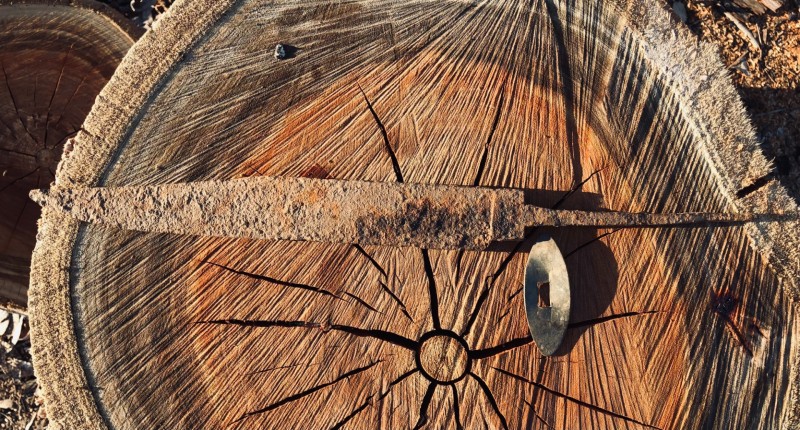
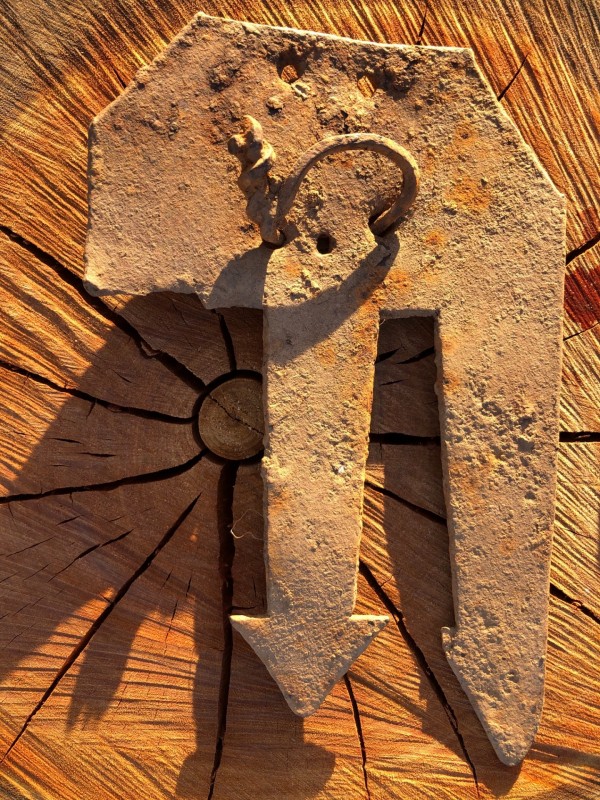
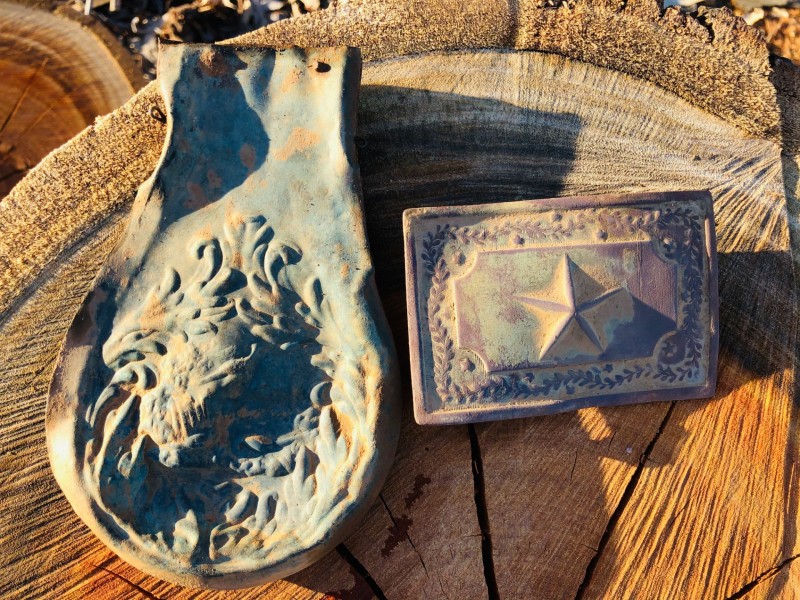
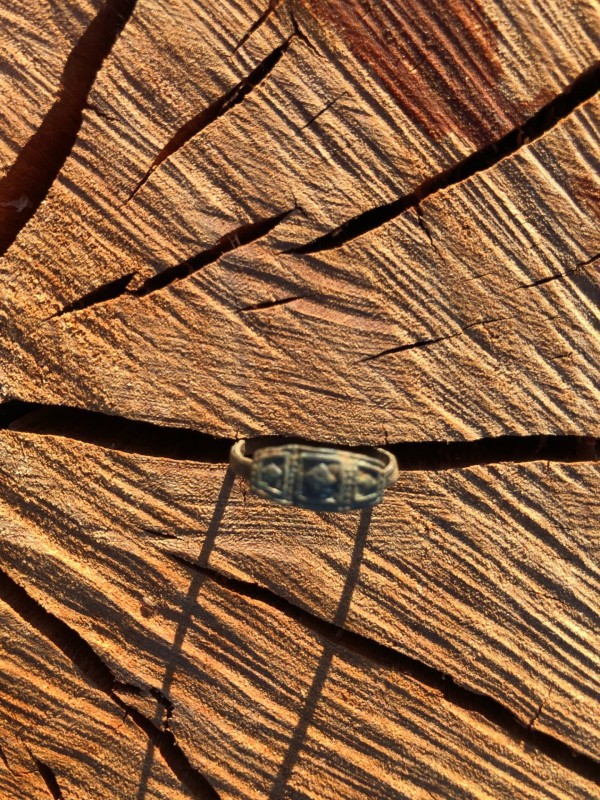
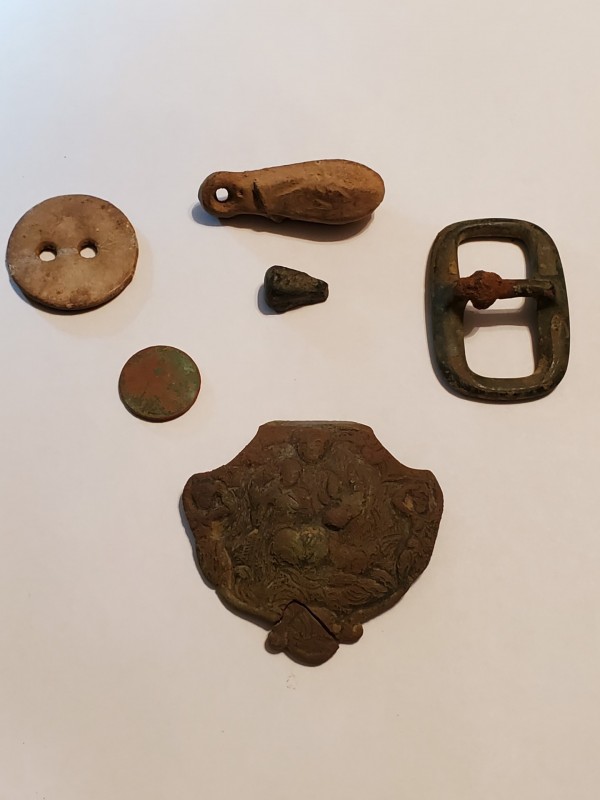
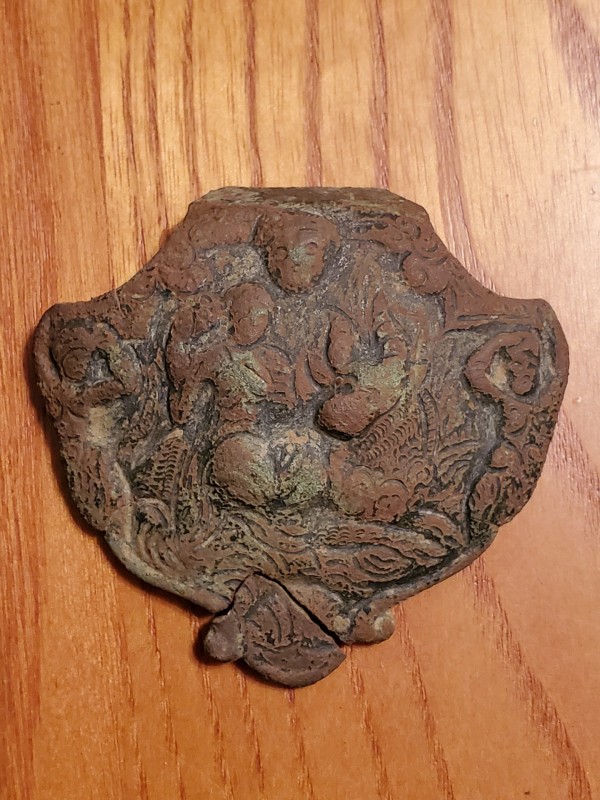
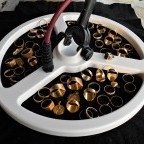

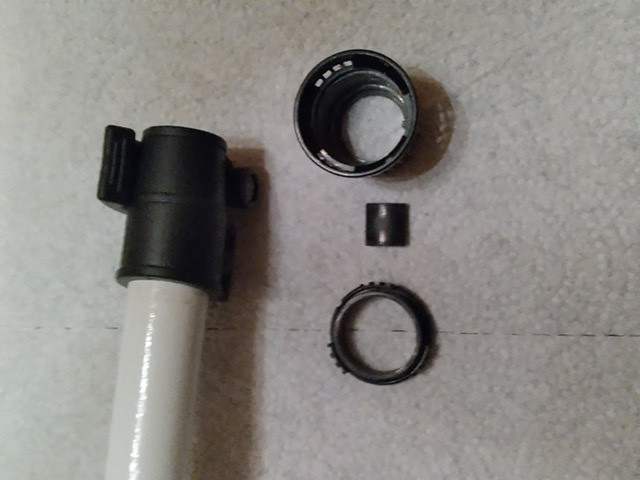

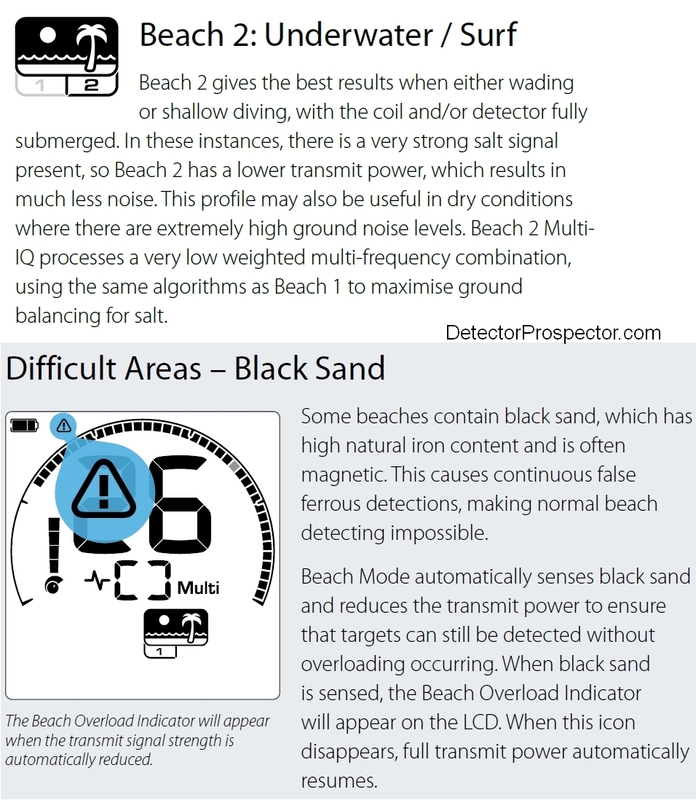
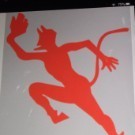
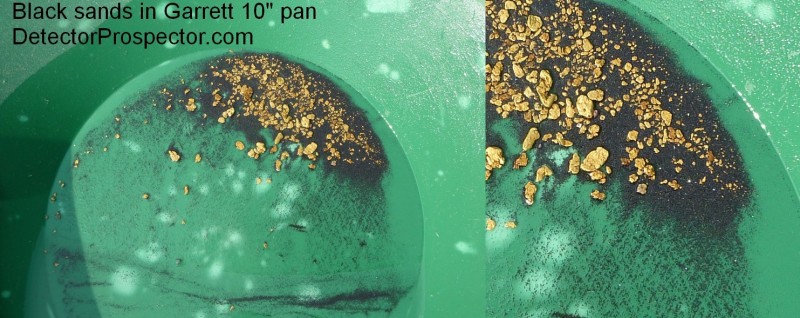

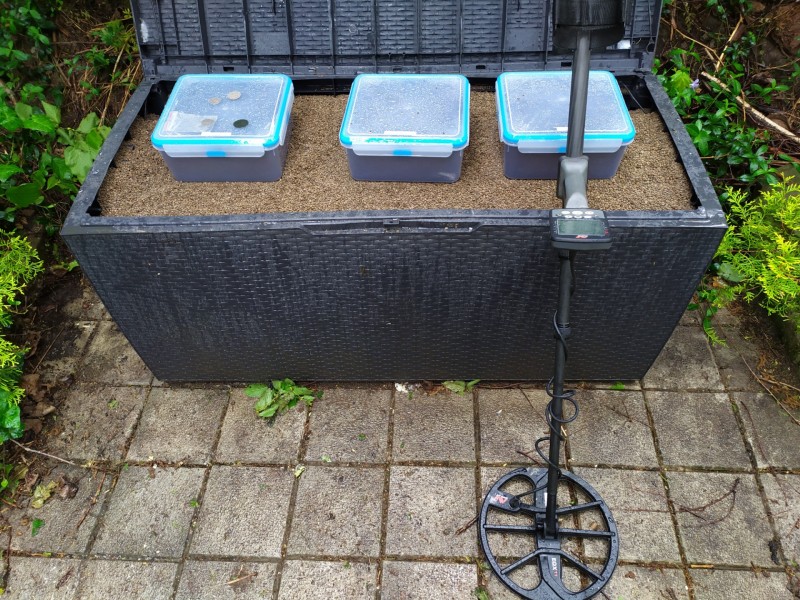
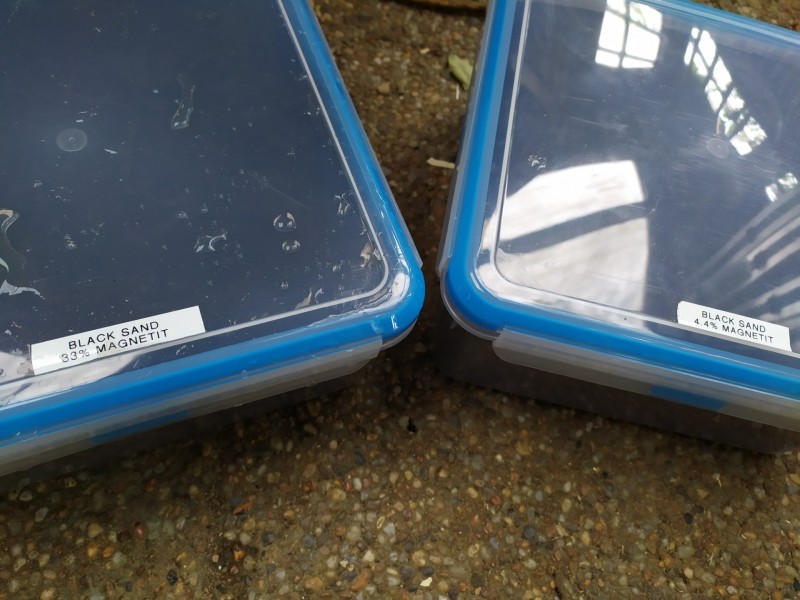


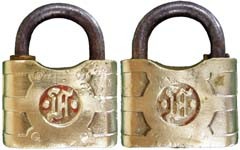


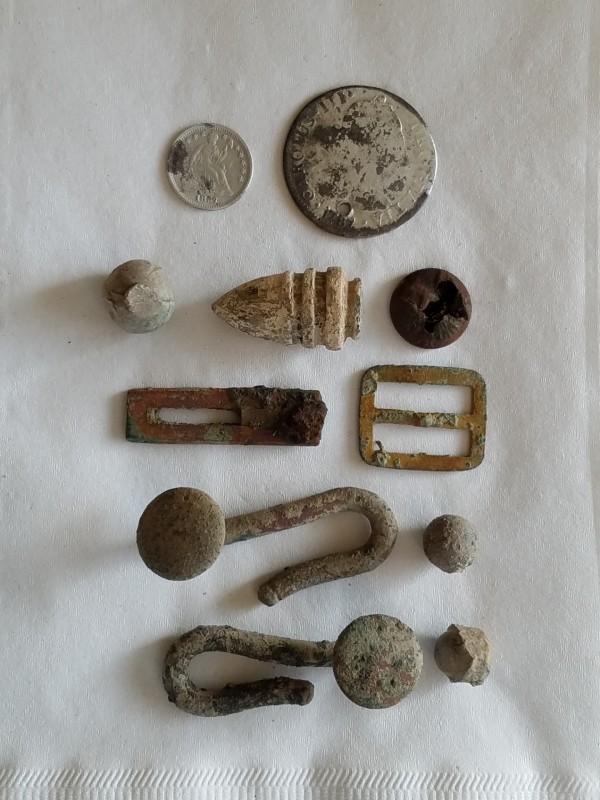
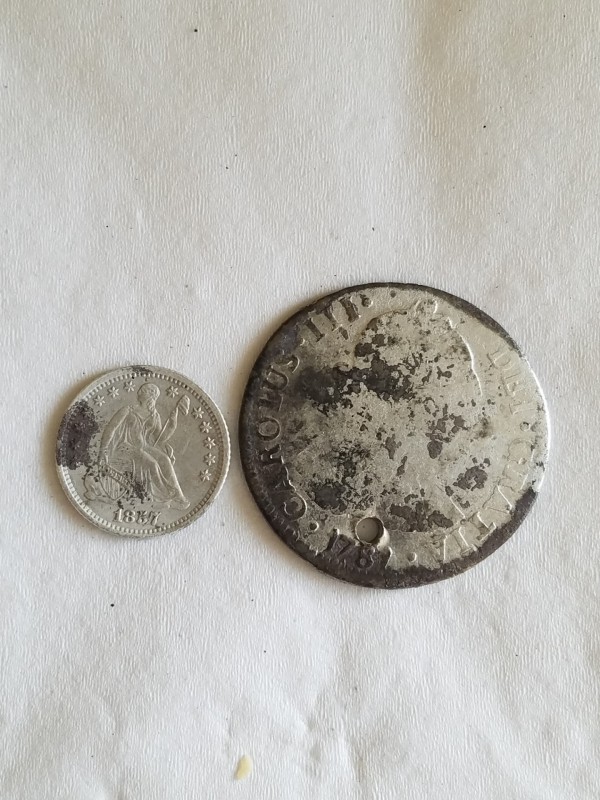
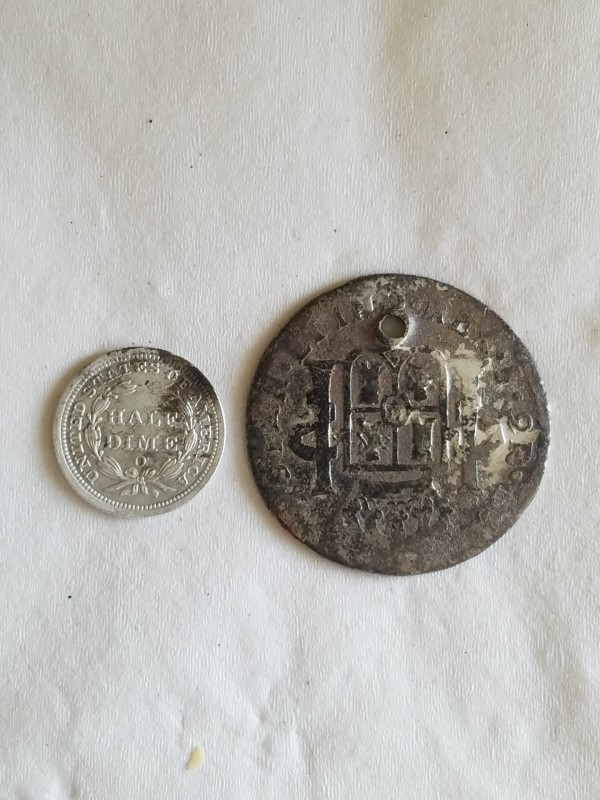


.thumb.jpg.d71314a45f3dc82bf75ac1b96e7e9201.jpg)
